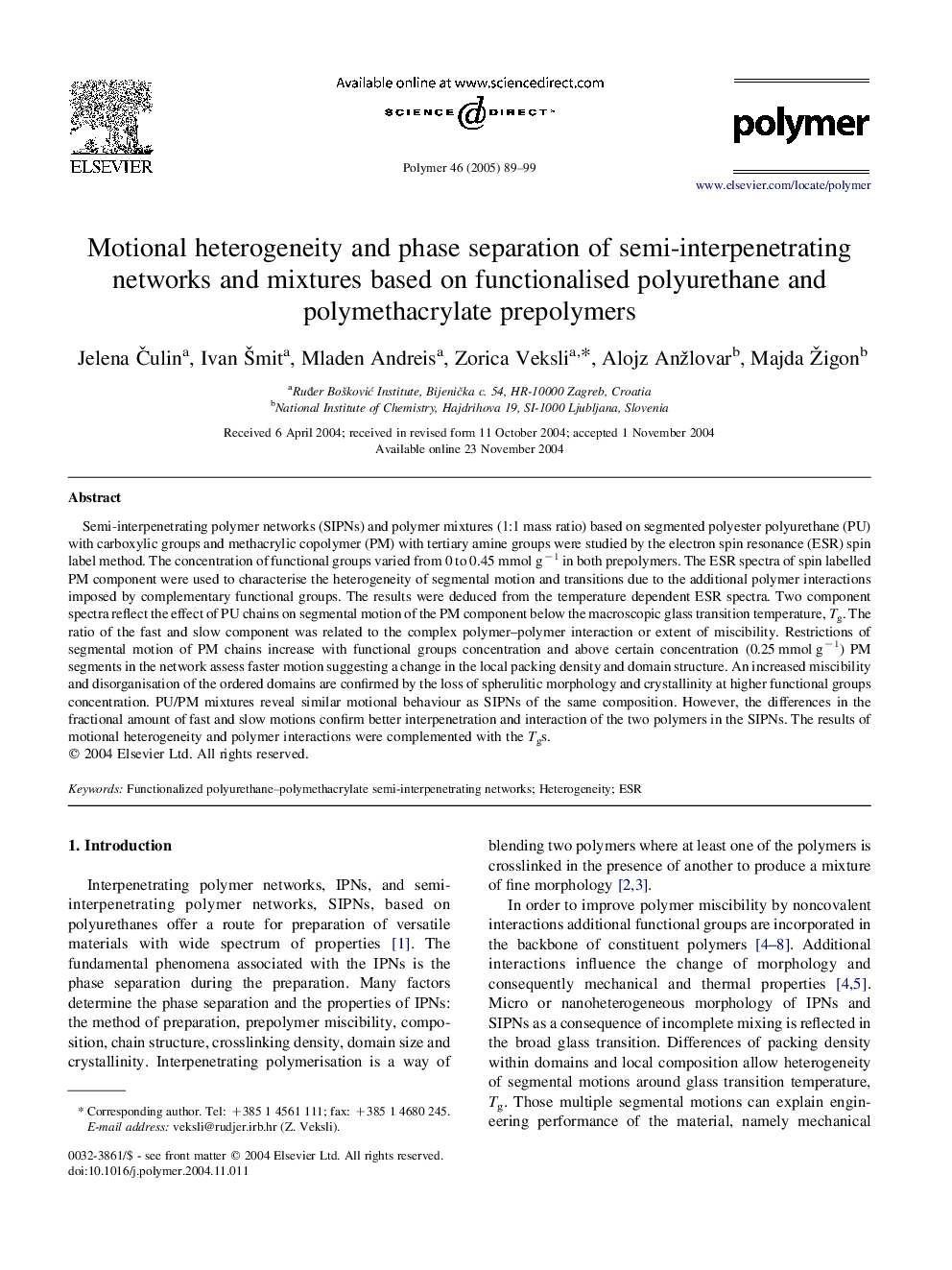| Article ID | Journal | Published Year | Pages | File Type |
|---|---|---|---|---|
| 9559759 | Polymer | 2005 | 11 Pages |
Abstract
Semi-interpenetrating polymer networks (SIPNs) and polymer mixtures (1:1 mass ratio) based on segmented polyester polyurethane (PU) with carboxylic groups and methacrylic copolymer (PM) with tertiary amine groups were studied by the electron spin resonance (ESR) spin label method. The concentration of functional groups varied from 0 to 0.45 mmol gâ1 in both prepolymers. The ESR spectra of spin labelled PM component were used to characterise the heterogeneity of segmental motion and transitions due to the additional polymer interactions imposed by complementary functional groups. The results were deduced from the temperature dependent ESR spectra. Two component spectra reflect the effect of PU chains on segmental motion of the PM component below the macroscopic glass transition temperature, Tg. The ratio of the fast and slow component was related to the complex polymer-polymer interaction or extent of miscibility. Restrictions of segmental motion of PM chains increase with functional groups concentration and above certain concentration (0.25 mmol gâ1) PM segments in the network assess faster motion suggesting a change in the local packing density and domain structure. An increased miscibility and disorganisation of the ordered domains are confirmed by the loss of spherulitic morphology and crystallinity at higher functional groups concentration. PU/PM mixtures reveal similar motional behaviour as SIPNs of the same composition. However, the differences in the fractional amount of fast and slow motions confirm better interpenetration and interaction of the two polymers in the SIPNs. The results of motional heterogeneity and polymer interactions were complemented with the Tgs.
Keywords
Related Topics
Physical Sciences and Engineering
Chemistry
Organic Chemistry
Authors
Jelena Äulin, Ivan Å mit, Mladen Andreis, Zorica Veksli, Alojz Anžlovar, Majda Žigon,
